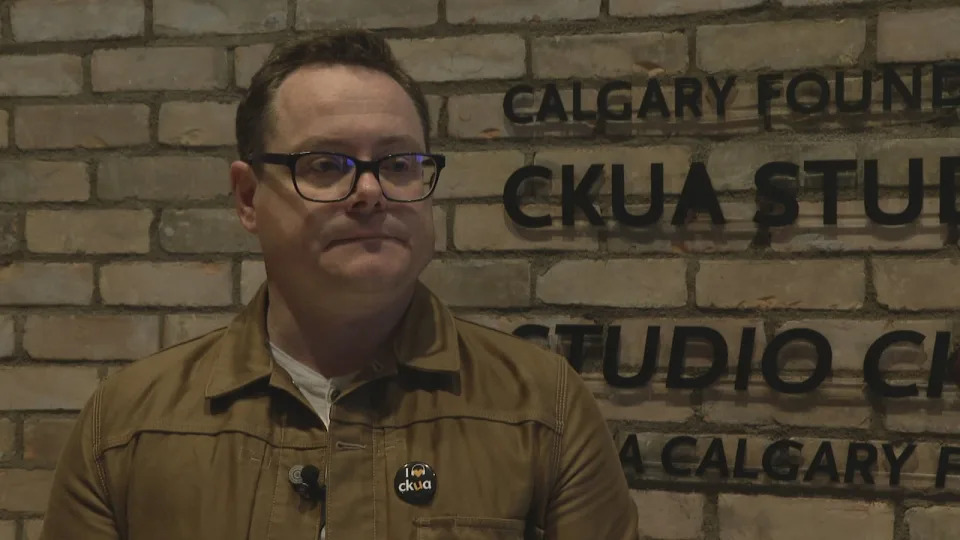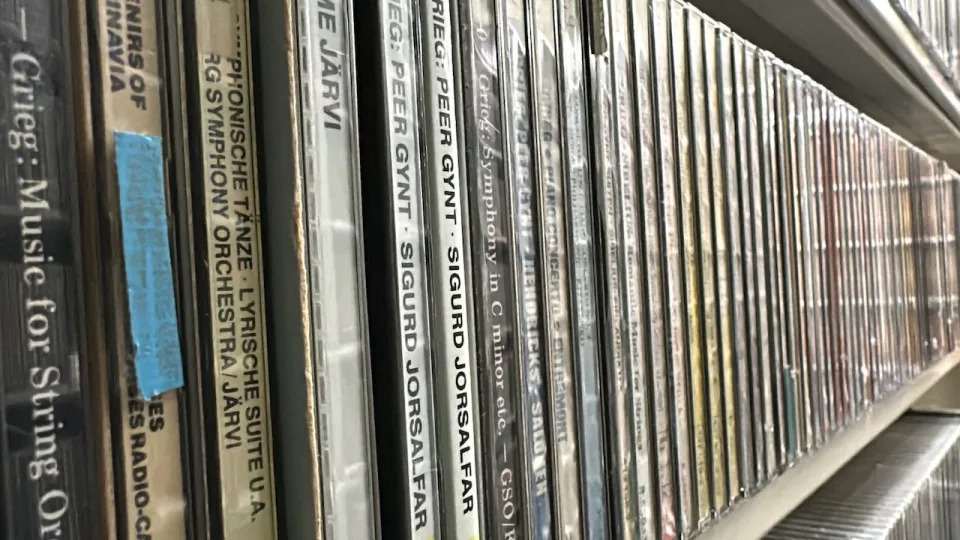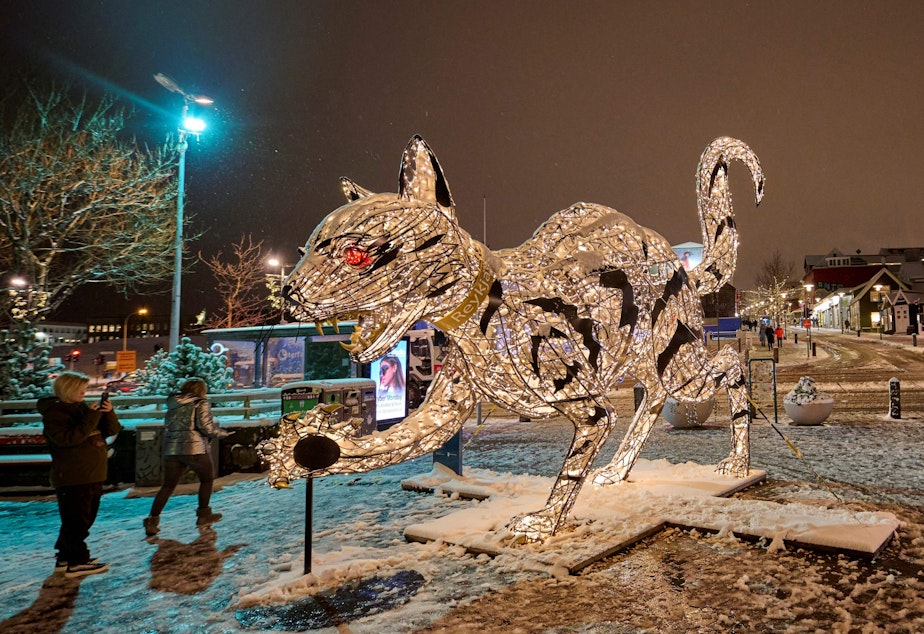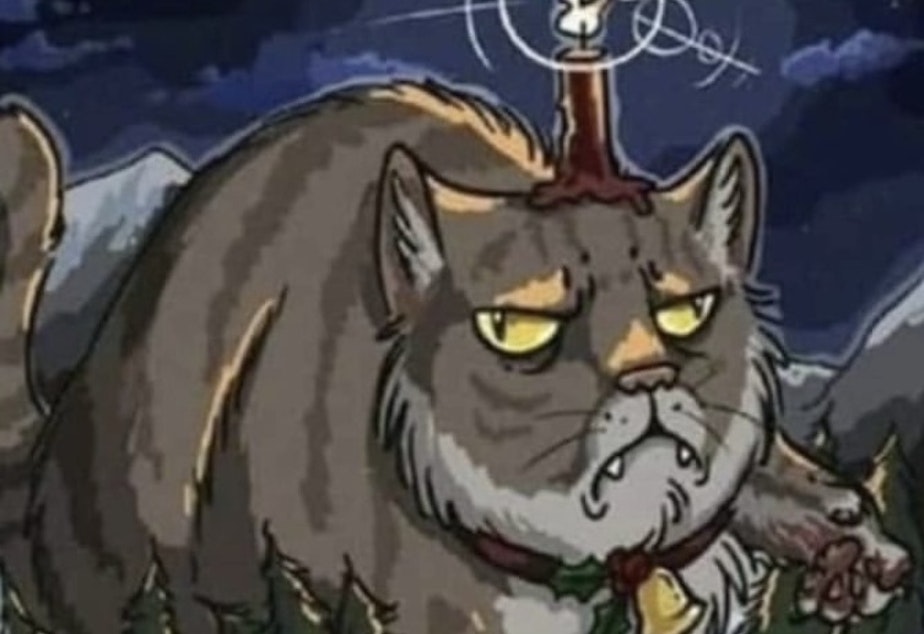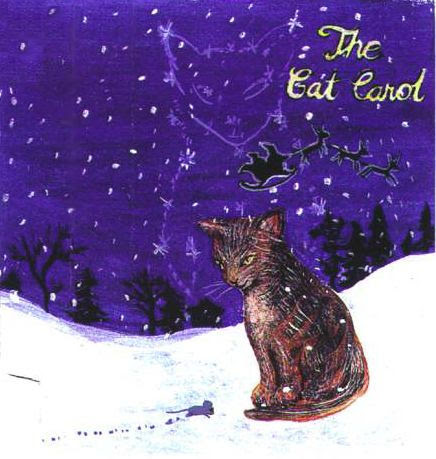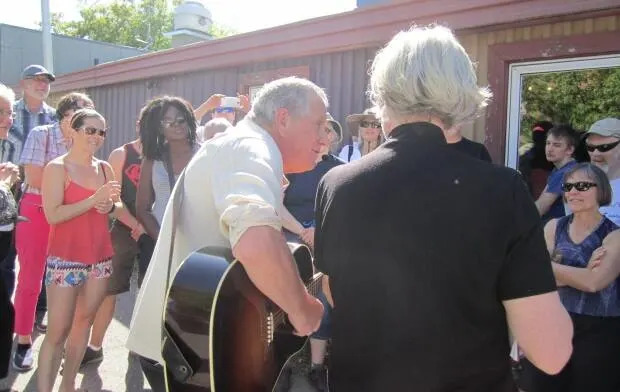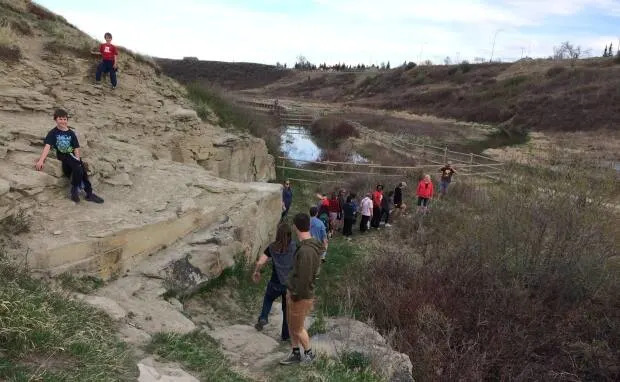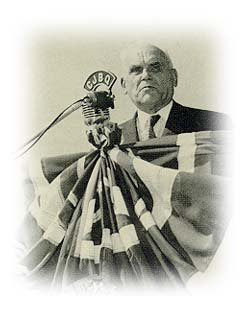
 There is great irony in the fact that one of Canada's foremost establishment right of centre think tanks the C.D. Howe Institute which often promotes a neo-con agenda is named after one of Canada's foremost Pooh-Bahs of State Capitalism.
There is great irony in the fact that one of Canada's foremost establishment right of centre think tanks the C.D. Howe Institute which often promotes a neo-con agenda is named after one of Canada's foremost Pooh-Bahs of State Capitalism. Grand Poobah is a term derived from the name of the haughty character Pooh-Bah
in Gilbert and
Sullivan's The Mikado. In
this comic opera,
Pooh-Bah holds numerous exalted offices, including Lord Chief Justice,
Chancellor of the Exchequer, Master of the Buckhounds, Lord High Auditor, Groom
of the Back Stairs, and Lord High Everything Else. The name has come to be used
as a mocking title for someone self-important or high-ranking and who either
exhibits an inflated self-regard, who acts in several capacities at once, or who
has limited authority while taking impressive titles.
NANK. Ko-Ko, the cheap tailor, Lord High Executioner ofTitipu! Why, that's the highest rank a citizen can attain!
POOH. It is. Our logical Mikado, seeing no moraldifference between the dignified judge who condemns a criminal todie, and the industrious mechanic who carries out the sentence,has rolled the two offices into one, and every judge is now hisown executioner.
NANK. But how good of you (for I see that you are anobleman of the highest rank) to condescend to tell all this tome, a mere strolling minstrel!
POOH. Don't mention it. I am, in point of fact, aparticularly haughty and exclusive person, of pre-Adamiteancestral descent. You will understand this when I tell you thatI can trace my ancestry back to a protoplasmal primordial atomicglobule. Consequently, my family pride is somethinginconceivable. I can't help it. I was born sneering. But Istruggle hard to overcome this defect. I mortify my pridecontinually. When all the great officers of State resigned in abody because they were too proud to serve under an ex-tailor, didI not unhesitatingly accept all their posts at once?
PISH. And the salaries attached to them? You did.
POOH. It is consequently my degrading duty to serve thisupstart as First Lord of the Treasury, Lord Chief Justice,Commander-in-Chief, Lord High Admiral, Master of the Buckhounds,Groom of the Back Stairs, Archbishop of Titipu, and Lord Mayor,both acting and elect, all rolled into one. And at a salary! APooh-Bah paid for his services! I a salaried minion! But I doit! It revolts me, but I do it!
NANK. And it does you credit.
POOH. But I don't stop at that. I go and dine withmiddle-class people on reasonable terms. I dance at cheapsuburban parties for a moderate fee. I accept refreshment at anyhands, however lowly. I also retail State secrets at a very lowfigure. For instance, any further information about Yum-Yumwould come under the head of a State secret. (Nanki-Poo takes hishint, and gives him money.) (Aside.) Another insult and, Ithink, a light one!
The C.D. Howe Institute
(formerly the Howe Research Institute), is a nonprofit policy research
organization established in 1973 by a merger of the Private Planning Association
of Canada, formed in 1958, and the C.D. Howe Memorial Foundation. It is located
in Toronto. Its principal source of funding is the fees contributed by a
membership that includes corporations as well as individuals with a background
in business, the professions or academia. The institute's staff is responsible
for the preparation of the annual Policy Review and Outlook and various other
publications on topical issues. The institute also commissions leading
researchers (academics for the most part) to write papers and monographs on a
wide range of topics such as fiscal and monetary policy, trade policy, social
policy, the environment, federal-provincial relations and constitutional reform.
Although the main focus of the institute's research program is the economy, the
range of topics it has covered over the years is very wide and occasionally
extends to non-economic issues such as culture and ethnicity.
The right wing agenda saw public policy as moving from the State capitalizing public services and infrastructure and moving towards selling off those assets to deal with its debt and deficit crisis. Public good was now replaced with state funding for private profit. Howevere now that we face the economic melt down that this ideology resulted in we will see if this think tank of Canada's establishment changes it's tune. Why do I find that unlikely.
D.G. McFetridge
Professor and Chair,
Department of Economics,
Carleton University
Toronto, October 22, 1997
Sponsored by Dofasco Inc.
The formation of public policy can be viewed from a number of perspectives.
Some see it largely as the outcome of tradeoffs between contending
interest groups; policy changes reflect nothing more than the ascendancy
of one interest group over another. To others, including the
C.D. Howe Institute, ideas matter. A good idea, well explained, can
overcome the power of even an entrenched interest group.
If ideas do matter, there is certainly merit in bringing the evidence
on the economic benefits of privatization to public attention. Privatization
is about more, much more, than selling off the bus company. It is
about institutional design, and in some countries (New Zealand, for
example) it has involved considerable reflection on just what should be
expected of government.
What we have come to call privatization is part of a larger process
of institutional change involving commercialization, contracting out,
and regulatory reform as well as the sale of state-owned enterprises to
the private sector. The literature on this process is vast but of uneven
quality.
The evidence on conventional contracting out, especially by municipal
governments, is unambiguously positive: it reduces the cost of
providing the services involved. There is more skepticism and less
evidence on the consequences of contracting for social services and for
the joint supply of infrastructure and services (public/private partnerships).
These instruments are likely to present serious—but not necessarily
insoluble — contract design problems. They may require the
government to be an active and strategic purchaser in ways not envisaged
by privatization zealots. Nevertheless, the potential economies,
especially in the accumulation and use of knowledge, make continued
experimentation worthwhile.
With respect to the entire process of commercialization, regulatory
reform, and the sale of state-owned enterprises to the private sector, the
weight of the evidence to date is that it has been beneficial. The precise
contribution of the change in ownership to the gains that have resulted
from the process as a whole is difficult to identify. One can argue,
however, that privatization is an essential part of the process in that it
provides the impetus for commercialization and makes regulatory reform,
especially regulatory forbearance, possible.
Whether or not privatization is a necessary part of the process, once
commercial objectives have been adopted and regulatory reform has
allowed competition or potential competition to exert its disciplining
force, there is little, if anything, to be gained from continued state
ownership — provided that the government sells its interest at a price
equal to the present value of the income it might expect to derive from
continued ownership.
Although the international experience with process ofcommercialization,
regulatory reform, and privatization has been favorable and
there are good conceptual arguments for privatization itself, the case for
individual privatizations must still be made on the merits. The body of
existing evidence is not so strong or so detailed that it can be taken to
imply that, say, the province of Saskatchewan would necessarily realize
significant economic benefits from privatizing its electric power or
telecommunications utilities.
The theoretical and empirical literature on privatization reminds
us to remain open to the potential benefits of employing decentralized
market or market-style incentives in place of hierarchy and command
and control. The ongoing international experimentation in institutional
design has been worthwhile and is clearly worth pursuing further.
The literature also teaches that privatization is frequently not about
pushing a button and getting less government. Unless the political
forces that brought about government intervention disappear (and they
may in some cases), privatization will be about getting different government,
rather than less government. It may involve catering to a different
set of interest groups or catering to the same interest groups in a
different way. It may involve the same or similar political activity
in different forums. It is often not simply a matter of opting for the
invisible hand.
C.D. Howe was a cabinet minister for 22 years, first in the government of Mackenzie King, and then in the government of Louis St. Laurent. Nicknamed the "Minister of Everything," C.D. Howe was forthright and forceful, and more interested in getting things done than in policy. He mobilized Canada for World War II, turning the Canadian economy from one based primarily on agriculture to one based on industry, and after the war turned it into a consumer economy spurred by veterans. Career Highlights of C.D. Howe:
created a national air service, Trans-Canada Airlines (later Air Canada)
created the Canadian Broadcasting Corporation (CBC) as a Crown corporation
created the National Harbours Board
restructured the debt-ridden Canadian National Railway (CNR)
established the St. Lawrence Seaway
established Canada's nuclear industry
initiated the Trans-Canada Pipeline
Professional Career of CD Howe:
Engineer
Taught at Dalhousie University in Halifax
Businessman - designed and built grain elevators
Political Affiliation:
Liberal Party of Canada
Riding (Electoral District):
Port Arthur (Ontario)
Political Career of CD Howe:
C.D. Howe was first elected to the House of Commons in 1935.
He was appointed Minister of Railways and Canals and also Minister of Marine. The two departments were soon combined into the Ministry of Transport. C.D. Howe oversaw the reorganization of Canadian National Railways, and the creation of the National Harbours Board and Trans-Canada Airlines, the forerunner of Air Canada.
In 1940, C.D. Howe was appointed Minister of Munitions and Supply in charge of war production for Canada. As head of the War Supply Board, and with the authority of the War Measures Act, C.D. Howe created a huge rearmament program using "dollar-a-year men," business executives called to Ottawa to reorganize the economy. The British Commonwealth Air Training Plan, which created more than 100 aerodromes and landing fields and trained over 130,000 airmen, was one of the results.
In 1944, C.D. Howe was appointed Minister of Reconstruction, and then Minister of Reconstruction and Supply, and began turning the economy toward consumer needs.
C.D. Howe became Minister of Trade and Commerce in 1948.
In 1951, with the growth of the Cold War, C.D. Howe became Minister of Defence Production as well as Trade and Commerce and oversaw the growth of the Canadian aircraft industry.
In 1956, C.D. Howe forced the plan for the Trans-Canada Pipeline, a gas pipeline from Alberta to central Canada, through Parliament but paid heavily when the Liberal government lost the next election and he lost his seat.
C.D. Howe retired from politics in 1957 at the age of 70. C. D. Howe
C. D. Howe was known for getting things done.
That made him exactly the type of leader Canadians needed to channel their domestic energies into military might during the Second World War.
Clarence Decatur Howe is best remembered as Prime Minister Mackenzie King's right-hand man. When King decided to meld responsibility for railways, marine transport and civil aviation into one powerful Ministry of Transport in 1936, the prime minister put Howe in charge.
Not only did Howe's achievements in transport help ready Canada's transportation systems for the massive load they would have to carry during the war, but the transportation policy expertise he acquired left him well-prepared to direct the all-important Ministry of Munitions and Supply during the war.
Howe was, as he put it, a "Canadian by choice." A carpenter's son, he was born in Waltham, Mass., in 1886, moving to Canada in 1908 to teach civil engineering at Dalhousie University in Halifax. He later established a consulting engineering firm that specialized in grain elevators.
King brought Howe into politics in 1935 and he immediately began to cut a swath through bureaucracy, refusing to be bound by tradition and red tape, seeing himself much more as an implementer than a policymaker.
Howe was particularly interested in establishing a strong Canadian presence in the growing field of civil aviation.
He was instrumental, before and after the war, in establishing or expanding Trans-Canada Air Lines, the National Harbours Board, Canadian National Railways, the St. Lawrence Seaway, the TransCanada Pipeline and even the CBC.
Canada's first Minister of Transport took over a Canadian transportation system that was fragmented and outdated.
He centralized the administration of ports and reformed the debt-laden CNR, increasing efficiency and accountability that would be so important during the war.
Unemployed workers of the "Dirty '30s" were mobilized to build airstrips across the country and Trans-Canada Air Lines, Air Canada's predecessor, was established as a Crown corporation.
All these measures helped to pull the country's transportation network out of the Depression, preparing it for the incredible challenge that it would face in 1939-45.
When Canada entered the war in September 1939, Howe retained the Transport portfolio but was also asked to take on Munitions and Supply.
One of Britain's first requests was that Canada play host to the British Commonwealth Air Training Plan, which would train nearly 50,000 pilots and groundcrew by war's end.
Howe left Transport to concentrate on Munitions and Supply in July 1940, but continued to prod the transportation sector for the extraordinary performances he was demanding of other Canadian industries.
Before the end of the war in 1945, railway traffic had tripled in Canada as food, munitions and other war supplies were rushed to Atlantic ports.
Howe was criticized for forging ahead with little regard for costs, but the results he engendered soon silenced his critics. Costs wouldn't matter if the war was lost, he told colleagues, and in victory, costs would be forgotten.
The war, of course, was won and the relentless energy of Canada's first Minister of Transport played a major role in the victory.
Canada's other wartime ministers were P. J. A. Cardin, 1940-42; J.-E. Michaud, 1942 - April 1945, and Lionel Chevrier, April 1945 - June 1954.
SEE:
Find blog posts, photos, events and more off-site about:

